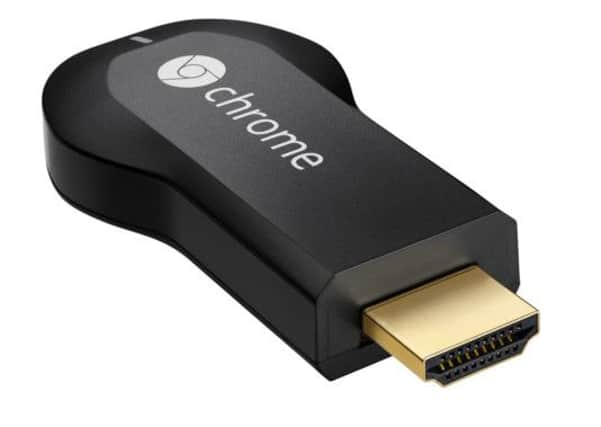How Google is sticking it to regular TV


At just £30 and with a Google guarantee behind it, the Chromecast is a compelling proposition, yet it’s not the only game-changer in town. So if you want to turn your regular telly into a smart one, you have more options than ever.
A smart TV is one that harvests programmes from the internet as well as the airwaves. But it doesn’t necessarily scour all online sources – and Google is not alone in pointing you first at its own content channels.
Advertisement
Hide AdAdvertisement
Hide AdIt’s this desire to licence programmes and thereby maximise revenue that has slowed the development of these devices. We tend not to think of Google as a content provider, but its empire includes YouTube – the world’s biggest TV network by far – as well as its new “Play Store” of movies and TV shows for sale. If that’s what you want, the Chromecast is perfect.
Installing it couldn’t be easier: it simply plugs into a spare HDMI port at the back of your telly and draws power either from a nearby USB socket or the mains. There’s no remote control or on-screen navigation; you use an app on your phone or tablet instead. If you don’t have one of those, you can harness Google’s Chrome browser on your PC or laptop, but it’s far less convenient.
Chromecast also allows access to Netflix and the BBC iPlayer, though not yet to the ITV, Channel 4 or Channel 5 catch-up services. You can, with a few chargeable third-party apps, also beam videos and photos stored on your home network to your TV. Doubtless, more services will be added over time.
Chromecast’s biggest rival has been Sky’s Now TV box, which retails for just £10 and allows access to the catch-up services of all the main broadcasters, though not YouTube. The box is made for Sky by Roku, which this week enters the smart stick market in its own right, with a £50 device that can access a somewhat wider range of services. Then there’s the Apple TV box, which has a similarly broad spectrum of content and a typically attractive on-screen interface – but a now less-than-attractive £99 price tag.